3 Day Tourguide of Oporto
Some people say that Oporto is easily done in one day, however if you want to see Porto inside out, then follow this 3 day tour guide to the city and rest assured you will have experienced culture, museums, good food and relax all in three days.
Day 1
Breakfast:
Start the getaway with the best breakfast of all times. O Diplomata is my favourite café of the city. It serves such a wide variety of things that you will want to return every day just to try out their whole menu. Located in Rua de José Falcão 32, you will already be in the city center so that after your breakfast you can start discovering the city.
After having had your breakfast, turn left and go down Rua de José Falcão, and follow the road across to Praça de Gomes Teixeira. Here you will find Igreja do Carmo and Igreja dos Carmelitas Descalços. The interesting fact about these two churches is that this religious site may look like one single church, however it is two separate churches divided by a 1-meter building. This division was created to separate the nuns in the Igreja dos Carmelitas and the monks of the Igreha do Carmo.
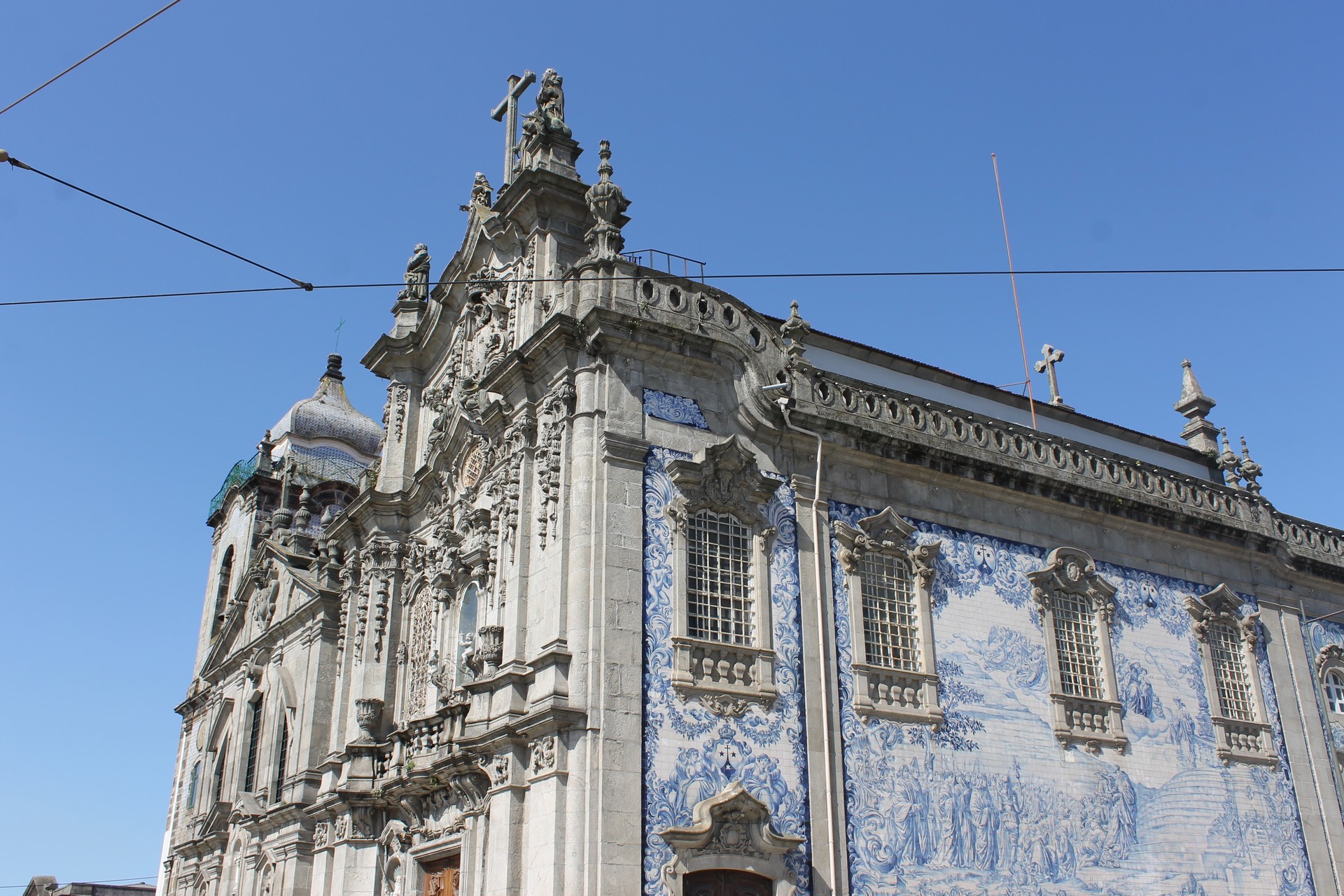
The Igreja dos Carmelitas Descalços is located on the left hand side. It is a seventeenth century building that used to belong to the Carmelite nuns. Between the two churches it is less intricate, with a classical granite façade and a single bell tower on the left covered in azulejos; the traditional, Portuguese blue and white tiles. The interior of this church however is breathtaking; there is a single nave with six side chapels each individually decorated. The white ceiling provides beautiful lighting for the church and the golden details add a beautiful touch to the building.
The Igreja do Carmo on the other hand is, in my eyes, one of the most eye catching and architecturally pleasing church of the city. The intricate, late baroque façade coupled with the traditional, Portuguese azulejos create a beautiful and unique church. Whilst the church was initially built in the mid eighteenth century, the blue and white tiles were later on added in the twentieth century. These portray scenes from the founding of the Carmelite order and Mount Camel.
Similarly to the Igreja dos Carmelitas, this church also has a single nave; however it is entirely made of granite therefore it has a slightly darker feel to the interior. It contains numerous oil paintings and gold ornaments. The seven intricate altars are the works of Francisco Pereira Campanha, a remarkable Portuguese sculptor.
After having visited the two churches, then make your way down across praça de Gomes Teixeira and subsequently down Rua das Carmelitas.
Here you will find one of the oldest and certainly most beautiful bookstore in Portugual: Livraraia Lello.
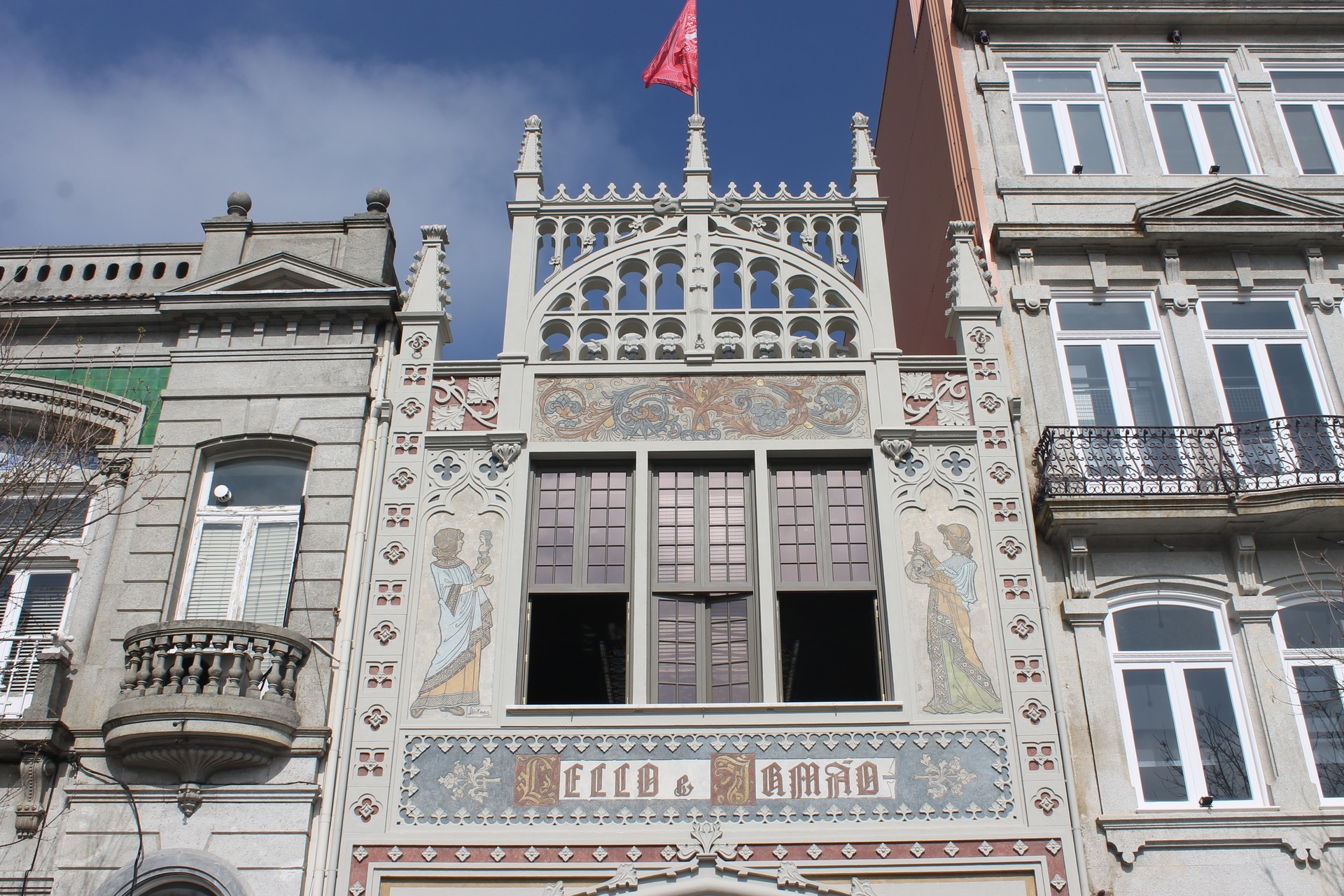
This bookshop belonged to José Pinto de Sousa Lello and his younger brother Antionio Lello. They had the bookshop on Rua das Carmelitas constructed in 1906. It was built in a neo-gothic architecture with two figures painted on either side of the windows. These two figures are a representation of Art and Science. The interior of the library is fascinating, with a beautiful, brown wooden staircase with detailed balusters leading to the top floor of the library. Incredibly organized, this library was frequented by JK Rowling.
Following from the bookstore, make your way down Rua das Carmelitas and you will find yourself in front of Igreja dos Clérigos. Designed by an Italian architect, Niccolò Nasoni, both the church and the tower were completed in 1748. The intricate motifs of the façade and the spires make of this church a prime example of baroque architecture. The interior of the Igreja dos Clérigos is just as impressive, containing a single nave in granite and marble with baroque carvings. Located just behind the church is the Torre dos Clérigos, church tower built by the same architect and completed by 1763. If you are feeling the challenge, you walk up 225 steps to one of the best views of Porto. This masterpiece is one of Porto’s landmarks and it’s intricate design and granite structure remind us of Roman Baroque influence in Portugal.
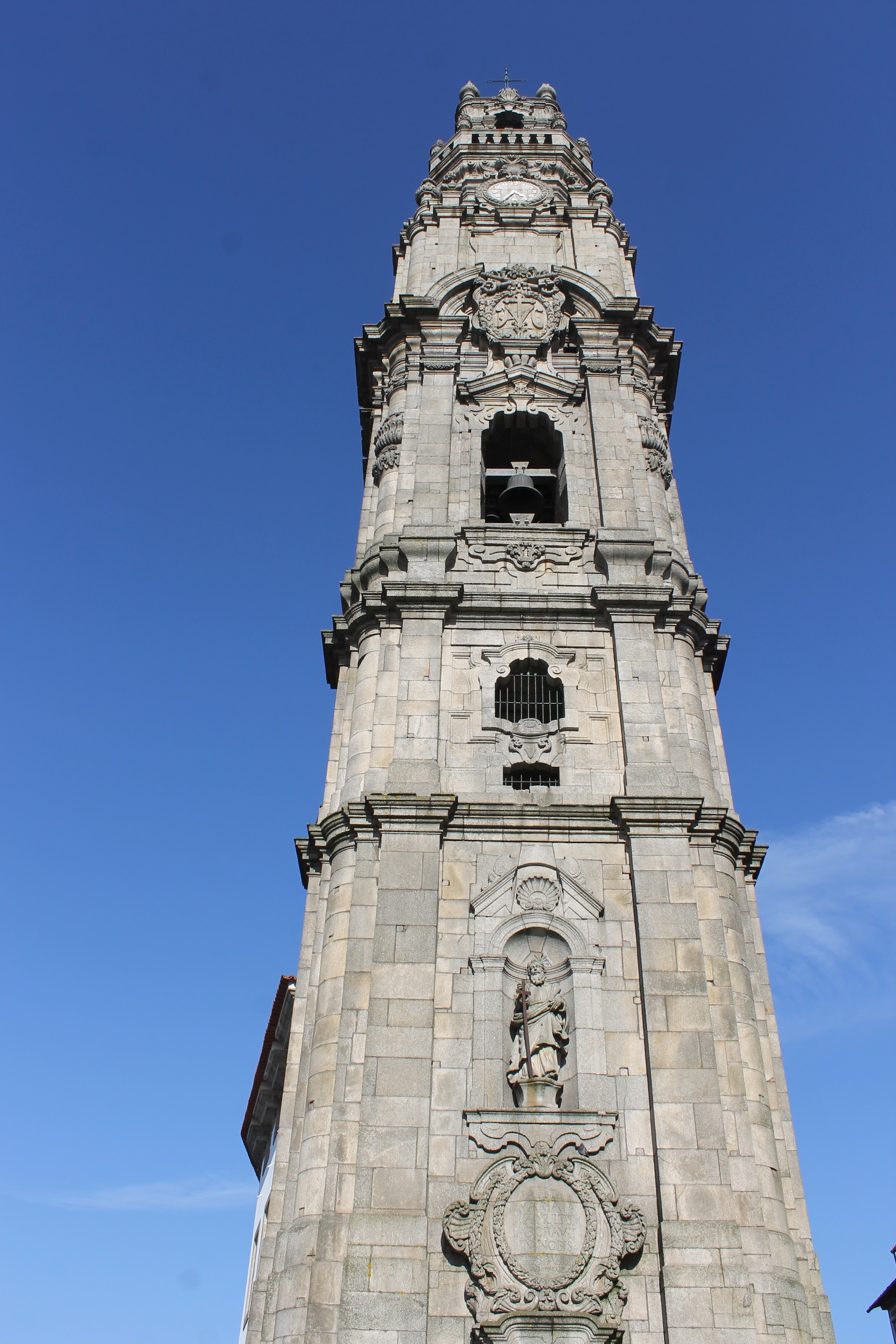
Just before reaching the main square, why not try one of Porto’s best ice creams? Santini is located on Largo dos Lóios, which is a right turn from Rua dos Clérigos just before Praça da Liberdade. Located only in Lisbon and Oporto, Santini is considered the best ice cream in Portugal. They have an extensive list of flavors varying from baked apple, almond, blueberry, acai with banana and many delicious chocolate options.
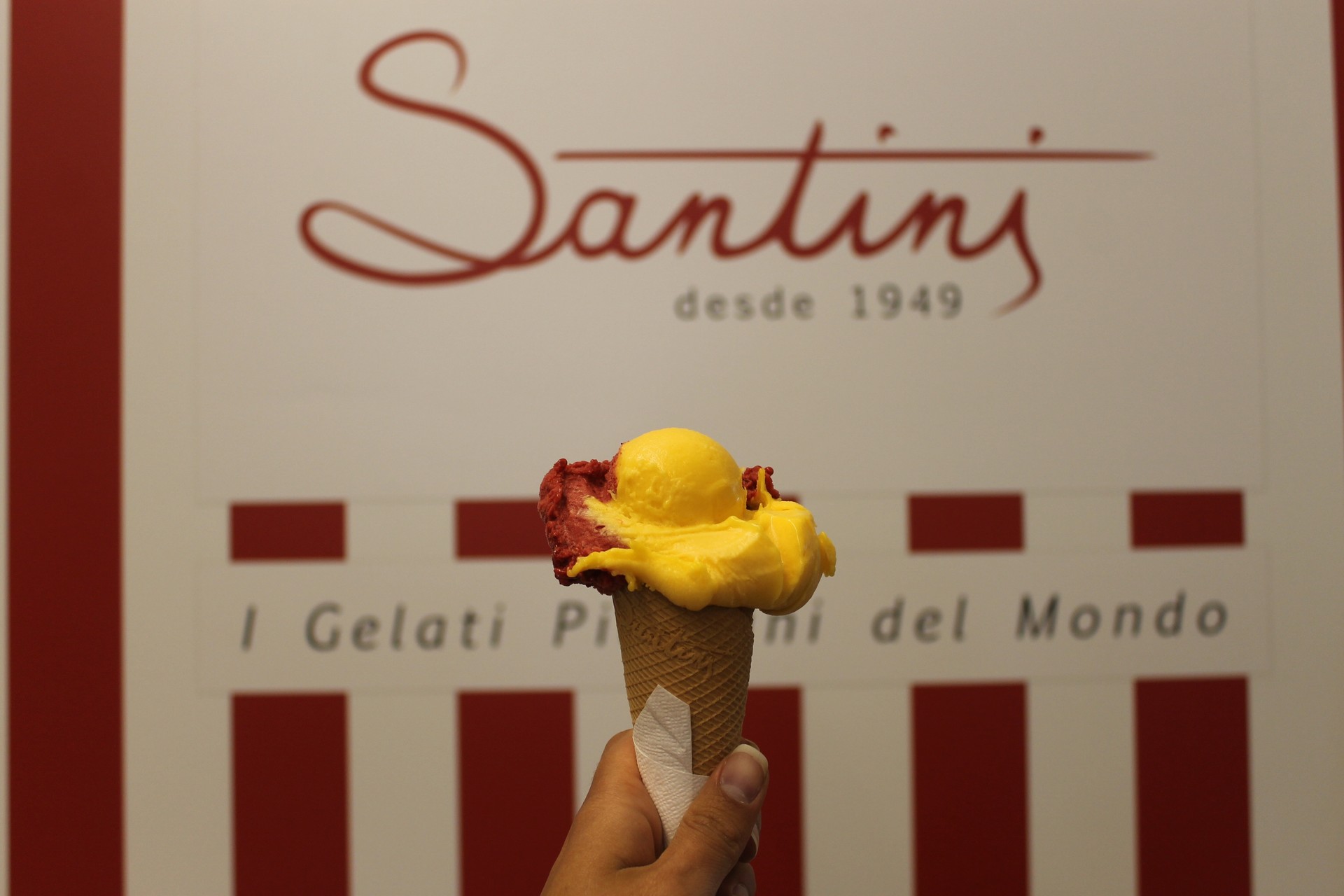
Now if you walk down the hill to Rua dos Clérigos and follow the road, you will reach Praça da Liberdade. This is one of the most important and influential squares of the city. Seen as the heart of the city, this is where you will feel the historical influence of the nineteenth century. The oldest building of the square is a convent that was built towards the end of the eighteenth century by the religious order of Saint Eligius. Furthermore in 1829 the square became the place where liberals were hanged. It is also the square where Portugal was proclaimed as a republic. The square is also home to the statue dedicated to King Dom Pedro IV, the first ruler of Brazil who also briefly reigned over Portugal. In 1916, the city council erected it’s building at the north side of the square augmenting the importance of this location. The long avenue connecting the north and south of the square is called Avenida dos Aliados. This avenue takes its name from an alliance formed between England and Portugal in the fourteenth century.

Just along the road before turning right towards the train station, you will see on your left hand side another absolutely gorgeous building with it’s façade covered in azulejos. This is called Igreja de Santo António dos Congregados, or in English this translates as Saint Anthony’s Church Congregados. It was built in the seventeenth century replacing a pre-existing church. Another example of baroque style, on the façade it pictures using azulejos tiles S. António (a Franciscan priest to whom the church is dedicated) and the Assumption of the Blessed Virgin Mary, This tile work is the works of Jorge Colaço and João Baptista Ribeiro, two famous artists.
Oporto is famous for it’s artistic train station: Estação de São Bento. You will enter into an artistic paradise from the 30’s. Through azulejos, Jorge Colaço depicts daily illustrations and historical events across the walls.
Now walk down Rua das Flores, one of the most colorful streets in Oporto. Recently renovated, the buildings maintain the traditional Portuguese architecture with a modern twist. One of the most beautiful café’s I have ever seen called Ourivesaria das Flores is located just along this street, and is covered in flowers. It is such a magical street and completely worth walking down and admiring the individually decorated buildings.
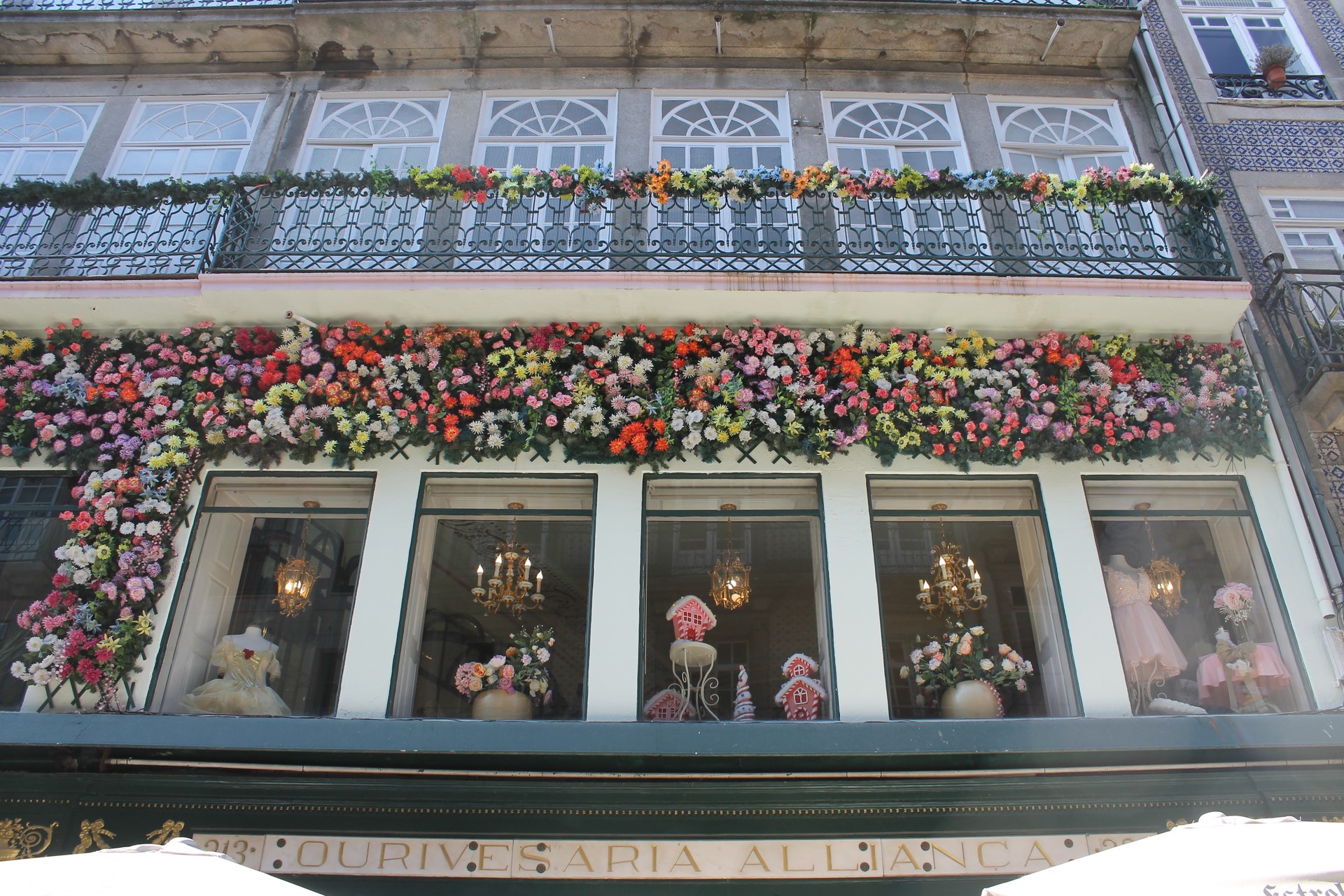
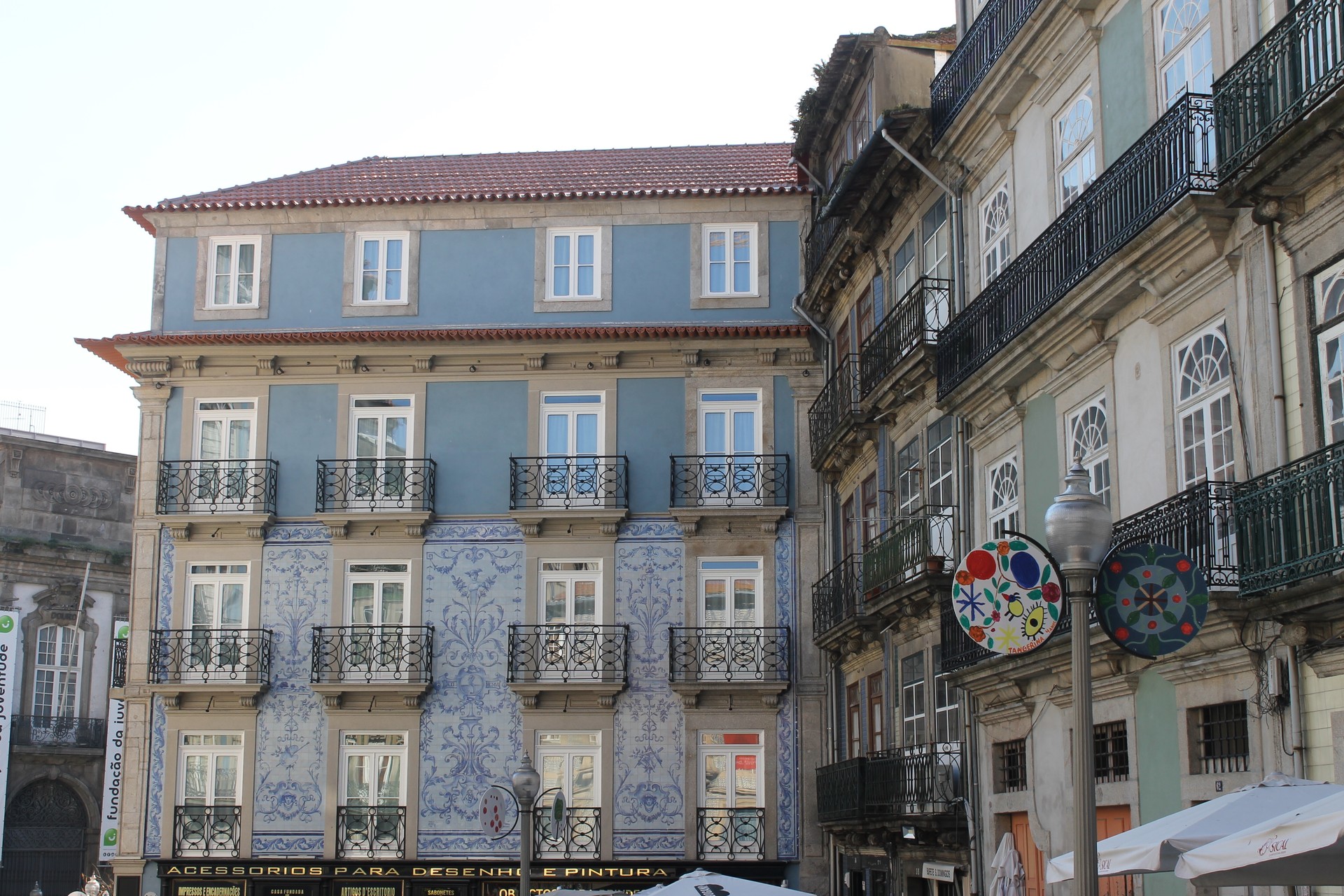
Lunch:
When you reach the bottom of Rua das Flores, walk down R. do Dr. Sousa Viterbo and you will see Restaurante DOP. The Portuguese chef, Rui Paula creates top quality gourmet dishes by using traditional Portuguese ingredients such as Octopus, Prawns, Shallots and Cod. Located in Palace of the Arts the restaurant really unites the history of its location with the authenticity of its menu.
Dedicate the afternoon to the Ribeira. The Ribeira is the most characteristic area of Porto, with its riverside colourful houses and little markets running along the Douro River. Historically this area was very important for commercial purposes, nowadays it is a prominent touristic location. The Ribeira Square, declared a World Heritage Site of the UNESCO is located just behind Cais da Estiva, is now home to little bars and restaurants.
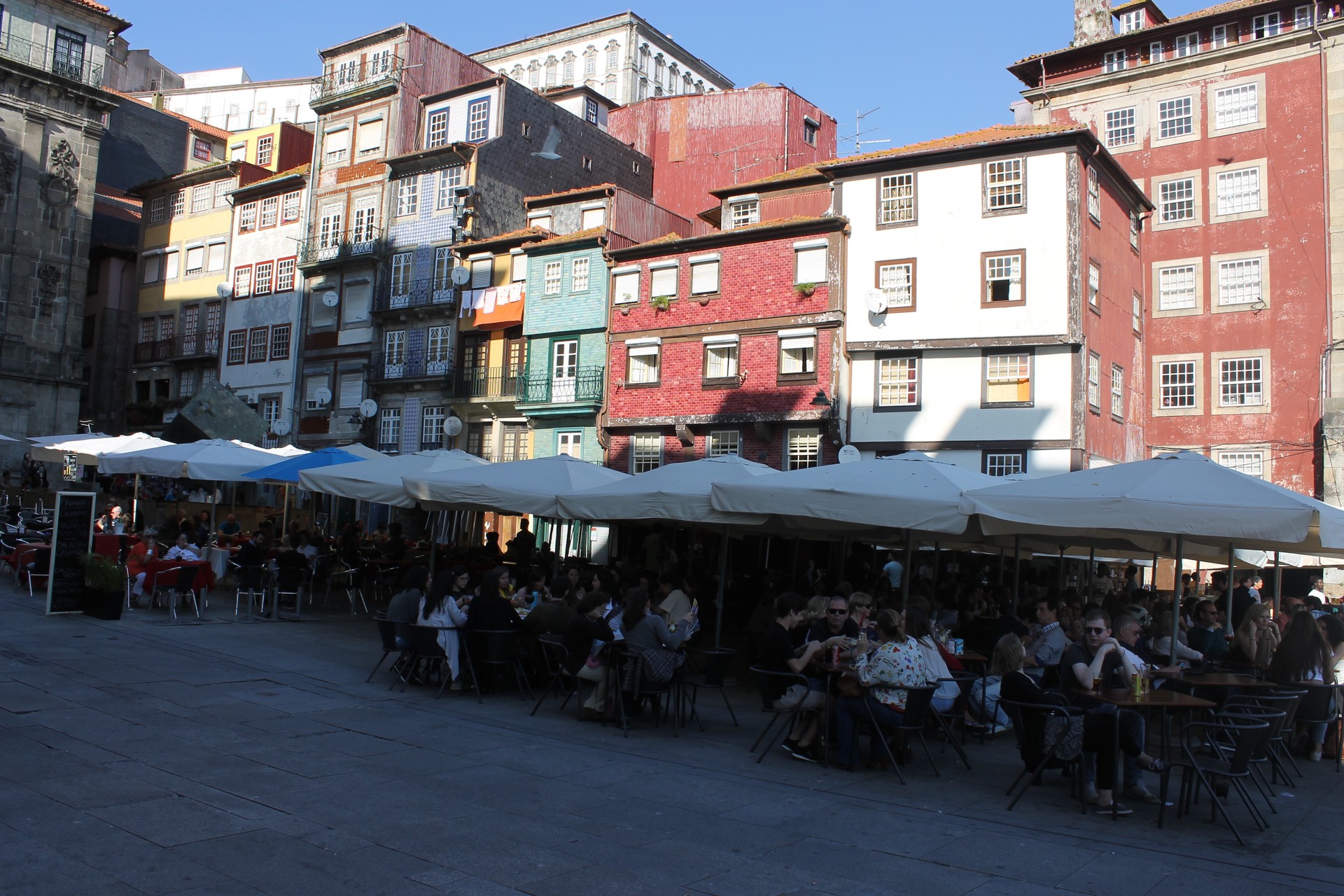
From the square, walk up Cais da Estiva which becomes Rua de Cima do Muro, which is the little street that leads up to Pont Luis I. From here you will walk across the bridge to the other side of the city. From the bridge stop and admire the beautiful city, and for sure you will spot some people jet skiing in the river.
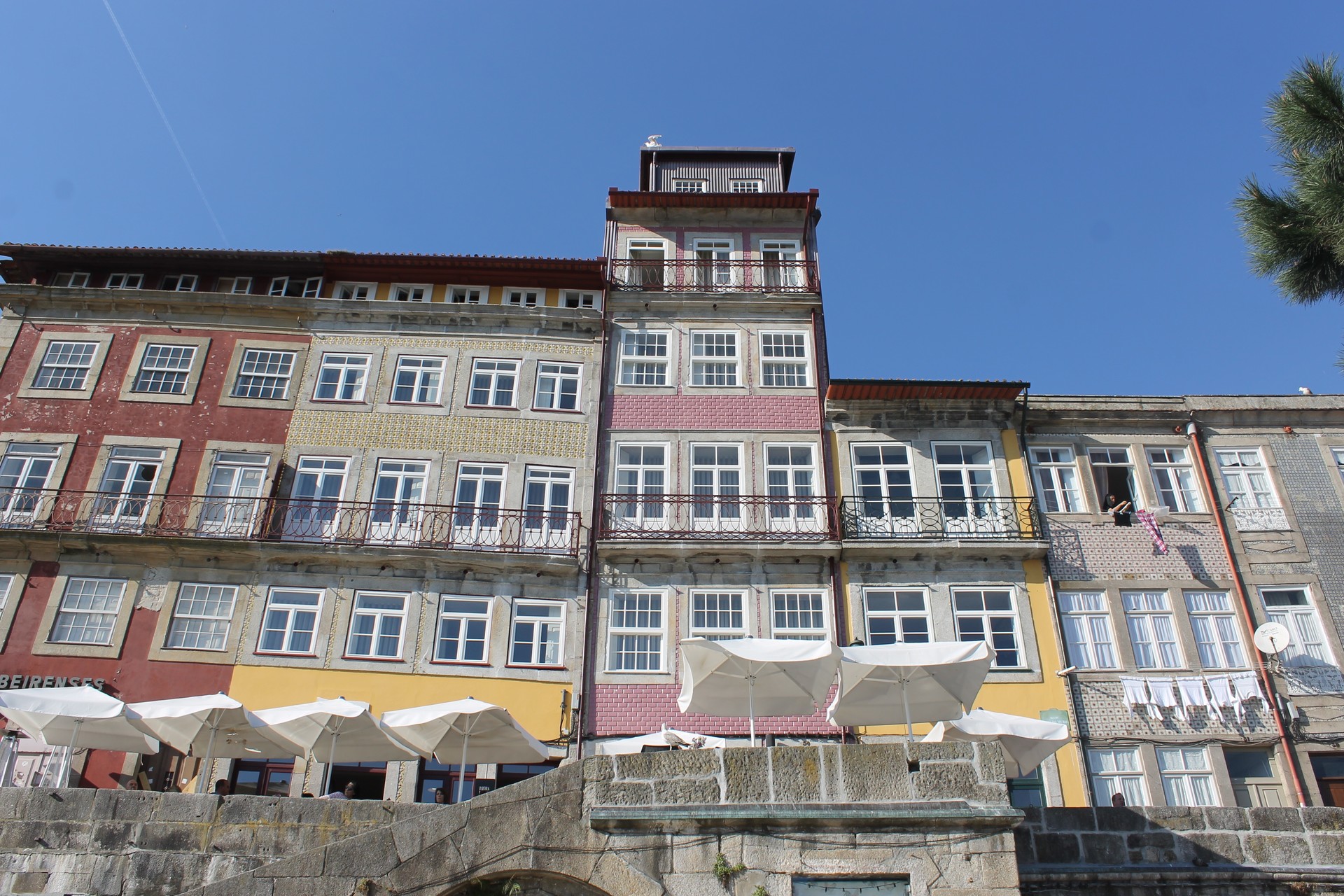
Ponte Luis I is an iconic bride connecting the Ribeira area to Vila Nova de Gaia. Vila Nova de Gaia is the area containing Port wine houses of Porto. The bridge was constructed towards the end of the nineteenth century, concluded in 1886, and replacing an existing bridge whose pillars still stand on the Ribeira side. The bridge is a very impressive yet rustic construction with two roads, the bottom one allowing everyday traffic to cross and the top carries the over ground trains.

In the late afternoon I would go for some tea to the Yeatman hotel, located in the Vila Nova de Gaia part of Oporto. The Yeatman is a five star hotel that specializes in Port Wine due to its location and close contacts and partnerships with Portugal’s finest winemakers. This hotel is located in Rua do Choupelo, Once you cross Avenida de Diogo Leite, you turn left up Rua Dom Alfonso III, and follow the road to the left and finally up to Rua Do Choupelo. The Yeatman is considered the best place to watch the sunset as you have a full 180-degree view over the city, with the sun setting on the left hand side.

Dinner:
As for dinner, try Kyoto na Baixa, a famous sushi restaurant in Oporto. They have a mix of both sushi and hot dishes to chose from so that if you do not like the idea of raw fish you have other equally delicious options. In terms of pricing it is very good, with prices varying from 5,20-10 Euros for 8-piece sushi. As for the hot dishes you have a choice between yakisoba and curry, with prices ranging from 8-12.50 Euros.
Day 2
Breakfast:
Voted Europe’s best destination in 2017, Café Majestic is a classic, historic and artistic café located on Rua de Santa Clara. Designed by the architect João Queiroóz, this venue encompasses the Art nouveau style with the charm of “La Belle Epoque”. It’s former name “Elite Café” summarizes just what kind of café this is. A place that combines art, glamour and culture, the café is Oporto’s favourite. The artistic décor, combining marble, floral elements, columns and large windows portray the intricate decorative style of the twentieth century. Coming to Café Majestic means you are in for a treat; you have a set menu including fresh orange juice, coffee or tea or hot chocolate, toast with homemade jams, freshly baked pastries and croissants, eggs or cheese and ham or smoked salmon, and to top everything off, a flute of sparking wine. Things really cannot get any better here, so I would highly recommend visiting this venue above all others, not only because they include a glass of sparking wine for breakfast but also the close links to Portuguese culture and history.
From Café Majestic, turn left and walk down Rua de Santa Catarina, into Praça da Batalha. On the left hand side you will find a little road that will lead you to la Igreja Paroquial de Santo Idelfonso. Again, another artistically and architecturally beautiful church in Oporto. Designed by the Italian artist, Nicolau Nasoni, the church was completed in 1739 in a Baroque architectural style, with the front façade of azulejo tilework. The azulejos were the works of the famous artist, Jorge Colaço and they depict scenes from the life of Saint Idelfonso, bishop of Toledo to whom the church is dedicated.
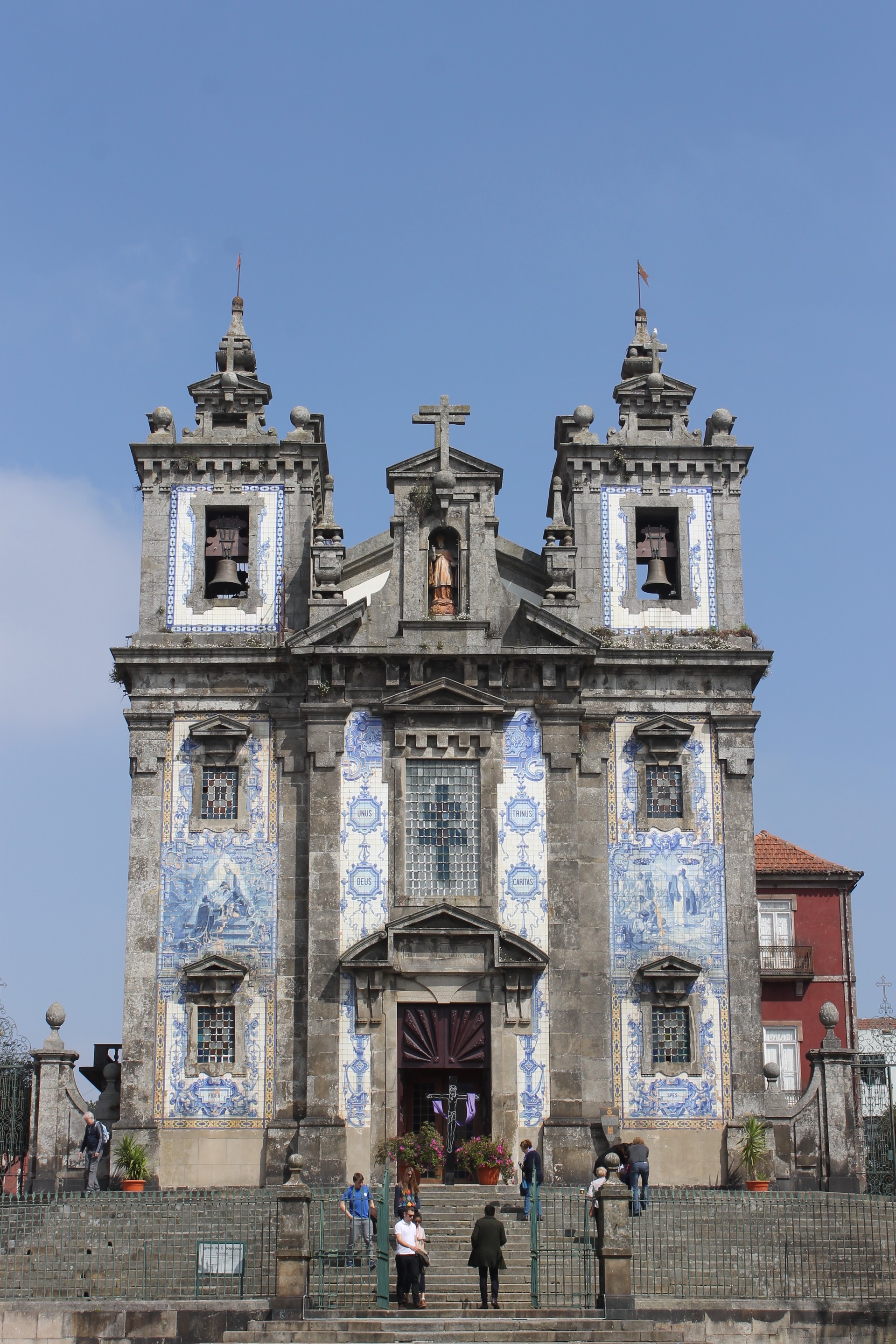
From the Igreja Paroquial de Santo Idelfonso walk back down Rua de 31 de Janeiro, and turn left by the station by Avenida Dom Alfonso Henriques. If you turn right at Calçada de Vandoma, you will find yourself in Terreiro da Sé. This is where the Porto Cathedral (Sé do Porto) is located. Just before reaching the cathedral however, stop and admire the Muralha Fernandina, which is what remains of the city walls of the twelfth century.
Sé do Porto is a roman Catholic Church built initially in the twelfth century. It was later refurbished between the late twelfth and thirteenth century in a Romanesque/Baroque style. It is one of the oldest buildings of the city and a very important Romanesque monument. Yet again, the Italian architect, Niccolò Nasoni is responsible for the baroque style of the building. The façade built in granite is in the midst of two square towers, topped with two cupolas. The internal part of the cathedral is composed of three naves, with minimal decoration, reminding us of the Romanesque influence in the style.
From the cathedral you can easily reach the Museu de Arte Sacra e Arqueología; Museum of Sacred art and Archeology. This little museum exhibits religious artefacts and archaeological remains. You will see religious sculptures dating to the thirteenth century, paintings, jewellery, vestments and illuminated manuscripts. Opening hours are Tuesday – Saturday from 10.00AM -13.30PM & 14.30PM-17.00PM.
Another beautiful museum to visit is the Centro Portugues de Fotografia, a fotographic exhibition located in a sixteenth century Municipal prison. It contains both temporary and permanent exhibitions ranging from contemporary to historic Portuguese and international photography. This exhibition is open from Tuesday-Friday from 10AM to 12.30PM & 2PM – 6PM. On Saturday and Sunday’s it’s open from 3PM to 7PM.
Lunch:
Near to the Centro Portugues de Fotografia, in Rua das Carmelitas you will see Joshper on the left hand side of the little shopping road opposite Livraraia Lello. Joshper is a great little place for a quick lunch. They serve traditional dishes such as the Açorda do marisco and Bacalhau à Brás – but also more usual plates such as steak, chicken, cheese platters and a selection of tapas. They are quick to serve and the prices are very reasonable.
I would dedicate the early afternoon to the Museu Nacional de Soares dos Reis, Portugal’s first public art museum located in Rua dos Carrancas. It was founded in 1833 as a way to preserve the confiscated property of the Portuguese monasteries that were being shut down. Recently, the museum acquired more modern artefacts including ceramics, sculptures, jewellery, furniture, paintings, glassware and textiles; it is a museum dedicated to the fine arts.
Opening hours are Wednesday – Sunday 10AM-18PM and Tuesday from 14PM-18PM.
After having a walk around the museum, take a stroll through the Jardins do Palacio de Cristal. These charming gardens were designed by a German landscape artist, Emille David, who also designed the Palace to hold the international show in 1865. However since 1956this palace was replaced by the current dome pavilion. The gardens are a popular destination for romantic walks amongst locals and tourists; the best part of this is that you will find several themed gardens such as the garden of feelings, garden of roses and the garden of aromatic plants.
From the gardens, take the road called Rua de Júlio Dinis and you will find yourself at the roundabout (Rotunda de Boavista) where the Casa da Múisca is situated. Casa da Música is a building designed by Rem Koolhaas, an architect from Netherlands. This is Oporto’s concert hall, home to the National Orchestra. It has become an icon of the city – This architectural masterpiece is worth the visit; it is the only concert hall in the world to have two walls made up entirely of glass.
Dinner:
The best Italian restaurant in Oporto in my eyes is Pulcinella, located in Avenida Méres 390, close to Matosinhos beach. A very easy restaurant that serves high quality wood-fired pizza using only the best, traditional ingredients. If you want to try one of their specialty starters then you must try the Burrata served with rosemary focaccia – it is absolutely delicious and not to mention the incredible pizza Al Tartufo, with white truffle cream.
Day 3
Breakfast:
Looking for a place to have a slightly healthier breakfast than pancakes and pastries? Try The Traveller Café, situated in Rua de Pasos Manuel, 165. You can chose to either sit inside the cosy café or to have your breakfast outside in their outdoors seating. You have a wide range of things to choose from varying from acai bowls, granola bowls, eggs and salmon and a mixture of superfood juices and detox shots.
Opening times are from 8AM Monday-Saturday and from 8.30AM on Sunday.
After breakfast walk back down Rua de Pasos Manuel and turn left at Rua de Santa Catarina. At the end of the road you will reach Rua de 31 de Janeiro. You turn right and keep on walking until you will see the train station on your left. At the station turn left down Avenida Dom Afonso Henriques and turn into a road called Rua de Mouzinho da Silveira on your right hand side. This road will lead you to Rua do Infante Dom Henrique where Palaçio da Bolsa is located.
Palaçio da Bolsa is a neoclassical building dating back to the XIX century that today has been declared World Natural Heritage Site by UNESCO. This is a very beautiful building that is worth visiting with a tour guide. Inside there are a series of heavily decorated rooms designed by a series of architects. Most fascinating is the Pátio das Nações, a courtyard covered by a dome which has been decorated with paintings of the countries Portugal had close commercial ties with during the nineteenth century. Also stunning is the Arab Room, which has been heavily decorated in the Moorish Revival style of the nineteenth century, covered in gold and intricate decorations.
Opening times:
April-October: 9AM-6.30PM
November-March -9AM-12.30PM & 2PM-5.30PM
Price: 25 euros.
The Palaçio da Bolsa is located just behind the Monument Church of St. Francis, known as the Igreja de São Francesco. I cannot stress how stunning the interior of this church is. Unfortunately it is prohibited to take photo’s inside so I am unable to show you but if you go to Oporto then you must see for yourself.
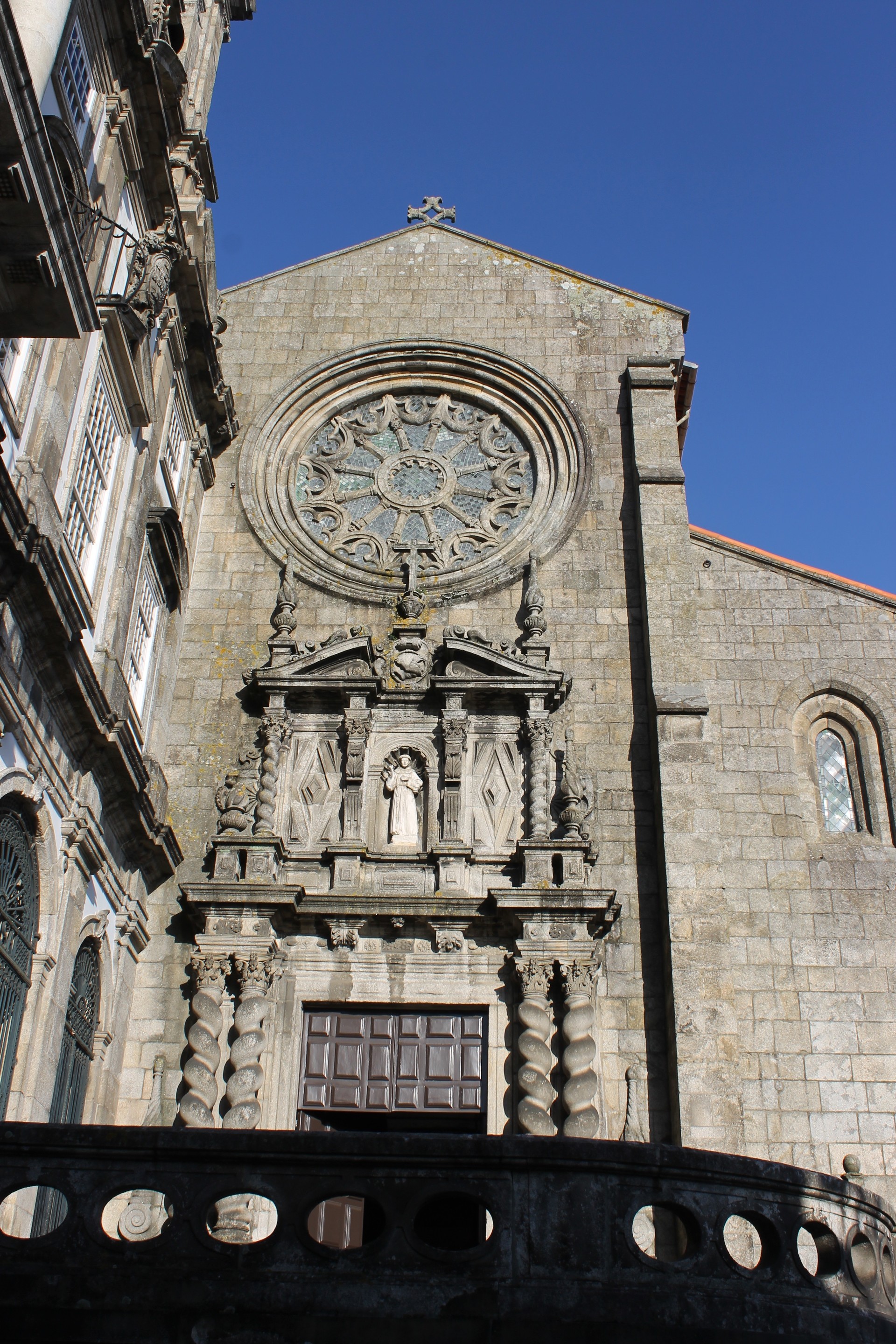
This church was first built in the thirteenth century only to be completed in 1425. However, similarly to the other churches in Oporto, it was reconstructed in the late seventeenth to the early eighteenth century in baroque style.
The interior is composed of wood embellished with golden objects such as animals, fruits, birds and floral motifs. The intricate detailing of the interior woodwork are the works of several Portuguese wood carvers. These details cover almost the entire church ceiling. The baroque interior creates an unusual contrast with the gothic structure however they seem to juxtapose harmoniously creating one of the most beautiful churches in the whole of Portugal.
You can buy a ticket to visit both the interior of the church and it’s museum. The museum holds paintings, objects and catacombs relating to the history of religion in Portugal throughout the centuries.
Opposite the Igreja de São Francesco you will find a small church with It’s façade embellished with azulejos. This church is called Igreja Paroquial de São Nicolau, and was initially erected in the thirteenth century. However it suffered damage from a fire and was therefore reconstructed. The church was finally completed again in 1762 in a neoclassical and baroque style, typical of Portugal of the eighteenth century. The Azulejo tiles were only added recently, in 1861, beautifully decorating the façade of the church. The interior is very minimal, with a single nave.
Lunch:
Definitely make sure you visit L’Kodac, located in Praia do Aterro, just off Avenida Liberdade. It is an ideal destination to go and relax, have a bite to eat and enjoy the beautiful location. L’Kodac is a beautiful venue with an elegant vibe. They serve many delicious food options and even better many cocktails. There is no better place in Oporto than here to have a little drink alongside the beach whilst watching surfers.
In the afternoon I would stay here and relax on the beautiful leather couches and recharge the energy from all the walking and site seeing.
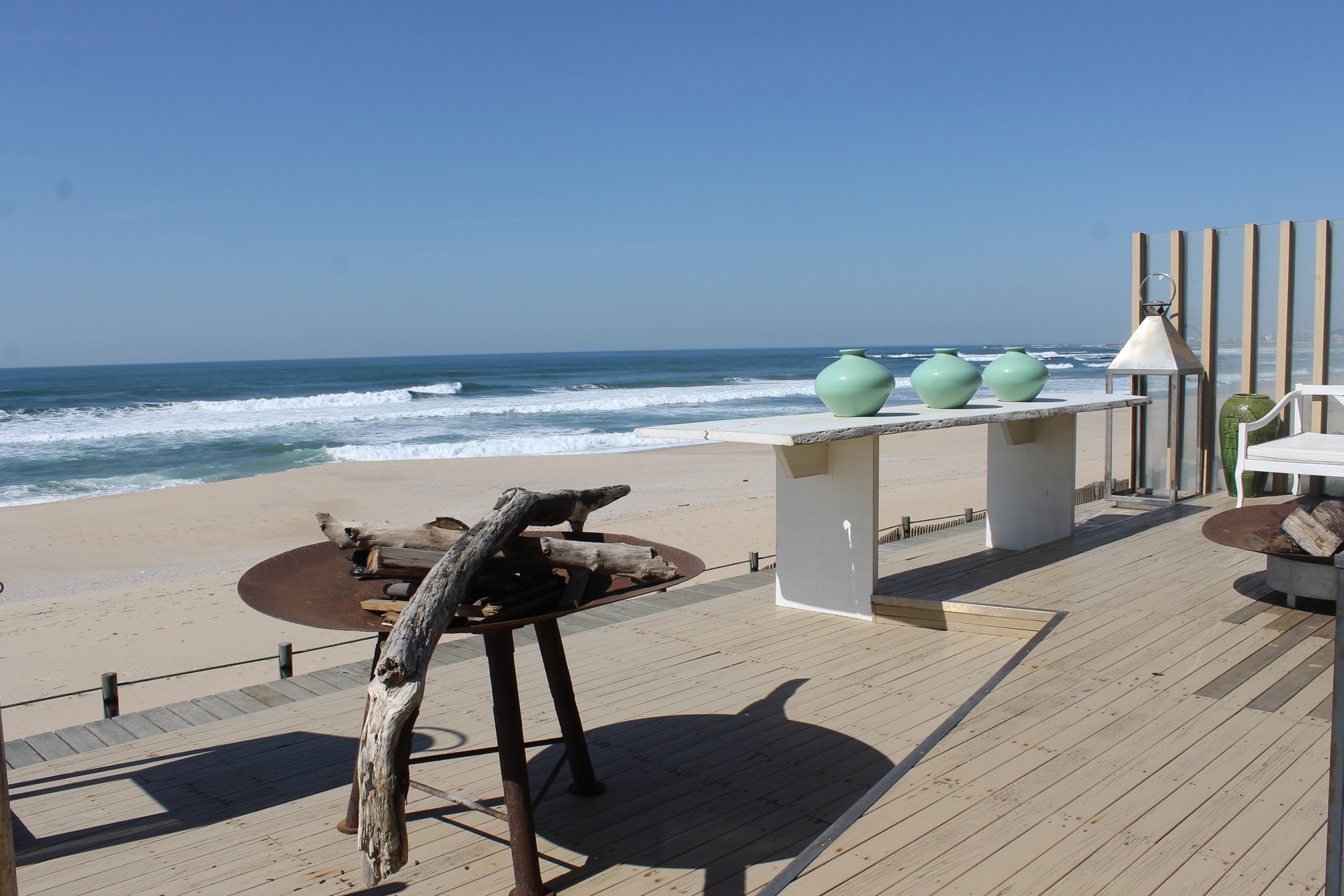

Dinner:
For dinner I would recommend ending your journey with the best fish restaurant recommended by locals called O Valentim, located in Matosinhos (Rua Heróis de França 26 ). Initially opened in 2004 and later reconstructed in 2013 this restaurants serves the best, fresh fish of Porto. Amongst the appetizers you can chose a fish soup, squid, clams. Following the appetizers you can chose delicately grilled sea bass, turbot, sole, sardines and squid. Of course they have varied side options as well to accompany your main meal. These sides include chips, potatoes, salad, vegetables and white rice.
Evening:
On the last evening it is always important to have a drink, so head out to Rua de Cândido dos Reis which is a street filled with bars and take your pick.
Photo gallery
Content available in other languages
- Español: Guía para ver Oporto en 3 días
- Italiano: Guida turistica di 3 giorni di Oporto
Want to have your own Erasmus blog?
If you are experiencing living abroad, you're an avid traveller or want to promote the city where you live... create your own blog and share your adventures!
I want to create my Erasmus blog! →



































Comments (0 comments)